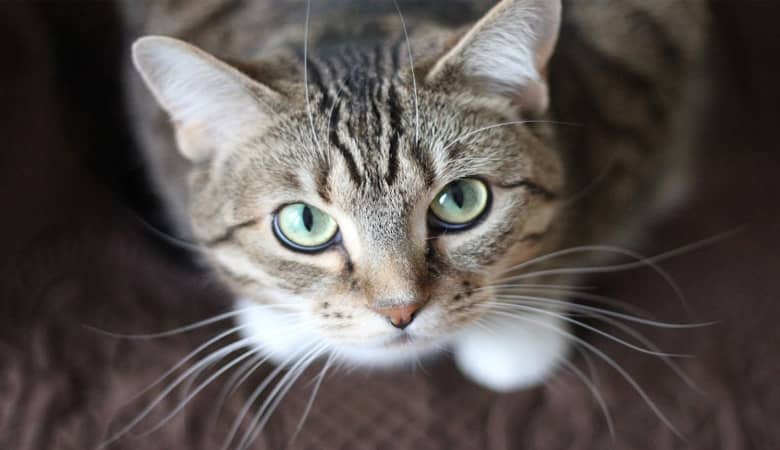
It’s always smart to bring your cats to the vet for a yearly wellness check. However, in-between visits, it’s also smart to keep monitoring your cat with home health checks. The Refined Feline has compiled necessary steps you can complete at home to check on your cat. This will ensure that they’re feeling fit and frisky, and that YOU are taking care of your furry friend!
Recognize Your Cat’s Normal Behaviors
Understanding what your cat’s “normal” is will allow you to realize when something is amiss. Your cat will most likely have a schedule they adhere to, as well as have certain personality traits you have noticed. Your cat may do certain things throughout the day that only you know about. Being their pet parent, you know your cat the best, and will notice when they’re acting a little differently. You’ll know their meows, chirps, and purrs; you also know when they will ask for treats, toys, and how they move as well as their general gait. Another vital element is observing and learning how your cat interacts with you, other family members, and when friends come over. Noticing their bathroom habits is also smart, and how much they eat and drink when they’re feeling healthy. This can give you a good baseline for their normal and help you see when they appear “off”. Sometimes it’s hard to pinpoint how they seem “off”, but it could be a decreased appetite or activity levels, which can alert you to any other problems.
As they would in the wild, cats are notorious for hiding their sickness. This is due to their history of trying to protect themselves, even carrying over to indoor cats. Felines can be the prey and don’t want to show weakness to any potential predators. It’s important to make a mental note on changes you see in your cat, as even the tiny changes can be indicators that something may not be right. The change may be in something they do every day or you may have only noticed them do this behavior or event once. Understanding your cat and what they do when they’re feeling “normal” will make it easier to notice these behavior changes, so keep a close eye on your feline friend!
Healthy cats will typically have bright, open, round eyes with just a corner of their extra eyelid showing. They will travel to their food and water bowl a few times a day, as well as the litter box. Most cats will urinate multiple times a day and defecate at least once, usually producing well-formed but not hard feces. Their coat will be sleek, clean to the touch, free of mats and non-greasy. They will also be very limber, jumping without any issues. Although cats can have clumsy days, if you notice this increasing, you may want to get them checked out.
Performing A Home Health Check For Your Cat
What better time to check your cat’s overall body condition then when you’re petting them- purrrfect timing! Since cats are covered in fur, it’s far too easy to miss things under the fluff, like a bite, a scratch, or something stuck. Make sure you’re checking them thoroughly- feeling your cat’s head, body, and tail for potential bumps, lumps, or even hair loss. Check for fleas by moving a small patch of their fur aside, and note any small black dots; you can also use a flea brush. To check for any pain or potential arthritis, move their limbs in an ambulatory fashion. Your cat may not be on board with this, so you can also feel their arms and legs to detect anything amiss. Lift the patch of skin in-between their shoulder blades to check on their skin’s elasticity and overall hydration. If the skin snaps back down to normal quickly, they are hydrated. Your kitty may be dehydrated if the skin is slow to return, especially if they are on the younger side. If you have an older cat, this could simply be excess skin from losing a few pounds over the years.
Examine Your Cat’s Eyes & Ears During A Home Health Check
Next, check your cat’s eyes, which should be bright and clear. They shouldn’t be weeping or squinting them, nor have any colored discharge. The third eyelid being visible is fine, but if it’s covering most of their eye, they may not be feeling well. Your cat’s ears should be pink inside, free of any parasites, discharge, wounds, or odor. Use a makeup round or a cotton ball with a little water to confirm their cleanliness. If you get anything brown-colored, chances are it’s wax. There may be an infection in your kitty’s ears if the discharge is darker or has an odor. If that happens, you should leave the ears alone and bring them to the vet so a sample can be collected and treatment started. Another indication that something is going on is when your cat is holding their ears at differing angles. They may excessively scratch their ears if there’s an infection so be sure to keep an eye on them as much as you can.
Examine Your Cat’s Mouth During A Home Health Check
Your cat may or may not be a fan of you looking into their mouth, but it’s another vital area to check out. Try lifting their lip to check their gums, which will be light pink with no inflammation or bleeding. Press the tip of your finger to their gums gently, which should go slightly pale but return to a normal color. If it takes a while to return to normal, or looks pale or red to begin with, your cat may need to visit your vet. Make sure you don’t see any teeth at weird angles or jutting out, or any kind of severe inflammation around the tooth line. If you notice any odor or bad breath in your cat’s mouth, this could mean their teeth need cleaning. They may require dental treatment if their mouth looks painful or uncomfortable. Don’t forget to also check your cat’s paws by pressing down and exposing their nails. Make sure they are free of any wounds or broken nails, and also give them a good trim to maintain proper nail health, if needed.
Spotting the Signs
Cats are notorious for seeming fine one day, and then feeling absolutely crummy the next day. For some cats it can be more gradual, such as when they age you observe them getting a little thinner. One good indication that something may need checking out is when they act opposite of their norm. These indicators can include:
- If you have a shy or quiet cat at home that is suddenly meowing all the time
- If your high energy cat is constantly on their cat tower and is suddenly lethargic or hiding
- If your cat is suddenly drinking a lot of water, requiring you to refill it multiple times a day
- If your well behaved cat is suddenly going outside of the litter box
- If you’re scooping your cat’s litter box cabinet much more or much less
- Any sudden or drastic behavioral changes, such as your reserved and quiet cat becoming very agitated or irritable
Being more aware of your cat’s normal can help you detect when something is off. Being in tune with your cat’s idiosyncrasies can help you notice those tiny changes which can become big medical changes quickly. The faster you notice something is wrong with your cat, the faster you can get your cat the medical attention they need. They’ll be feeling purrfect in no time, and you’ll have a calm heart knowing that your kitty is happy and healthy! You got this down to a science, pet parent!




